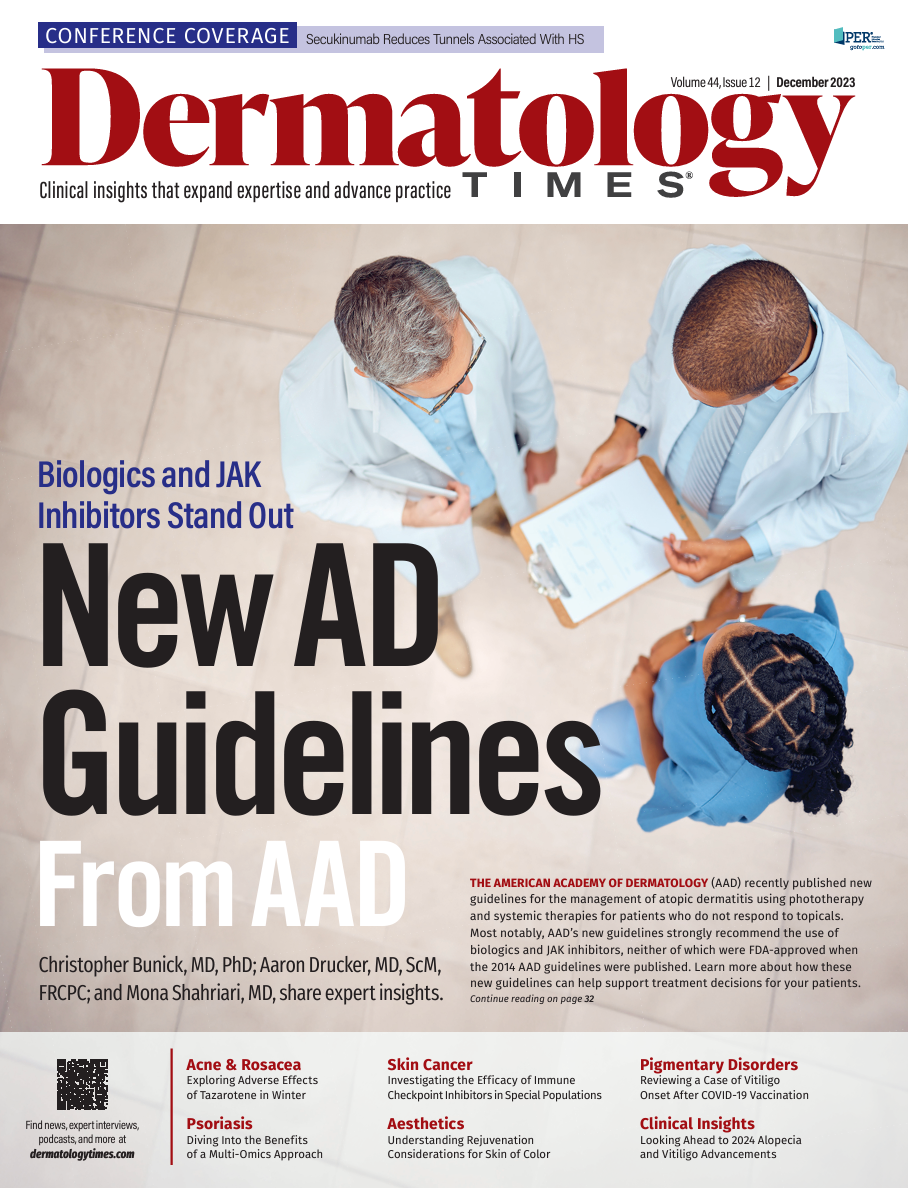- Case-Based Roundtable
- General Dermatology
- Eczema
- Chronic Hand Eczema
- Alopecia
- Aesthetics
- Vitiligo
- COVID-19
- Actinic Keratosis
- Precision Medicine and Biologics
- Rare Disease
- Wound Care
- Rosacea
- Psoriasis
- Psoriatic Arthritis
- Atopic Dermatitis
- Melasma
- NP and PA
- Skin Cancer
- Hidradenitis Suppurativa
- Drug Watch
- Pigmentary Disorders
- Acne
- Pediatric Dermatology
- Practice Management
- Prurigo Nodularis
- Buy-and-Bill
News
Article
Dermatology Times
Case Study: Vitiligo Onset Following COVID-19 Vaccination
Author(s):
A recent study presents a unique case of sudden-onset vitiligo following the COVID-19 vaccination, along with a systematic review of existing literature to shed light on the potential link between vaccination and vitiligo development.
Vitiligo typically presents as a sporadic condition with genetic and autoimmune influences. While viral infections have been implicated as triggers for vitiligo, the role of COVID-19 vaccination in its onset remains underexplored. A recent study presents a unique case of sudden-onset vitiligo following the COVID-19 vaccination, along with a systematic review of existing literature to shed light on the potential link between vaccination and vitiligo development.
Case Presentation
A 62-year-old woman, with no history of autoimmune disease, developed a depigmented rash within 24 hours of receiving her first Pfizer-BioNTech SARS-CoV-2 vaccination. The rash extended to her face, arms, and chest and worsened after the second dose. Despite oral and topical steroid treatments, as well as tacrolimus cream, the patient reported only subjective improvement in her skin lesions. While vitiligo typically arises sporadically, the temporal relationship between vaccination and depigmentation suggests a potential link, urging clinicians to investigate and share similar cases.
Literature Review
A systematic review of literature found in the PubMed, Embase, Scopus, and Web of Science databases focused on vitiligo onset post–COVID-19 infection or vaccination. The search revealed a total of 17 reported cases. Of these, 15 cases (88.2%) were associated with vaccination, and 2 cases (11.8%) followed primary COVID-19 infection. Most patients experienced a new onset of vitiligo (88.2%), while 2 cases reported worsening of preexisting vitiligo. The depigmentation varied in location, with 64.7% reporting generalized vitiligo and 35.3% presenting with local vitiligo. Locations of depigmentation varied among the 17 patients, and many reported pigment changes in more than one region of their bodies (Figure).

In the cases following vaccination, 53.3% described hypopigmented lesions after the first dose and 40.0% reported onset after the second dose. Only 23.5% of the total cases had a history of autoimmune disease. Diagnostic methods included Wood’s lamp examination (76.5%), biopsy (11.8%), Wood’s lamp and biopsy (5.9%), or clinical diagnosis alone (5.9%). Treatment outcomes were variable, with no complete improvement reported, 23.5% reporting some improvement, 11.8% showing no improvement, and 64.7% lacking follow-up data.
Pearls From Past Research
Vitiligo’s pathogenesis involves the destruction of melanocytes, and while its exact cause remains unknown, proposed triggers include physical injury, emotional stress, and autoimmune conditions. In the presented case and others in the literature, the temporal relationship between COVID-19 vaccination and vitiligo onset raises questions about a potential causal link.
The prevailing autoimmune theory suggests the involvement of cytotoxic T cells in the destruction of melanocytes. Biopsies in vitiligo cases have shown infiltrating cytotoxic CD8+ lymphocytes, leading to melanocyte apoptosis. Additionally, elevated levels of cytokines like tumor necrosis factor-alpha (TNF-α), interferon gamma, and interleukin (IL)-10 and IL-17 have been implicated in melanocyte destruction. Notably, the Pfizer-BioNTech vaccine has been associated with an inflammatory response involving upregulation of type 1 helper T cells and increased levels of IL-2, interferon gamma, and TNF-α, suggesting a potential link to vitiligo development.
The literature also reports new-onset autoimmune diseases following COVID-19 vaccination, including lichen planus, Guillain-Barré syndrome, systemic lupus erythematosus, and immune thrombotic thrombocytopenia. “Notably, one case included in our study described an eruption of lichen planus after the first dose of the COVID-19 vaccine, which worsened after the second dose. Additionally, the patient developed vitiligo macules in several areas after the second dose,” study authors wrote.
Molecular mimicry, where autoantibodies or vaccine adjuvants contribute to autoimmunity, has been proposed as a potential mechanism.
Further Research Needed
While the reported cases of vitiligo following COVID-19 vaccination are rare, the temporal relationship observed in this and other cases prompts consideration of a potential link between the vaccine and the onset of vitiligo. It is crucial for clinicians to be aware of the possibility of developing or worsening skin diseases post vaccination or infection. Despite the limited sample size and heterogeneity of reported data, the potential risk of skin diseases should be weighed against the substantial benefits of COVID-19 vaccination.
Further research is necessary to establish a definitive causal relationship between COVID-19 vaccination and vitiligo onset. In the interim, clinicians should remain vigilant for similar reactions and treat them appropriately. The benefits of COVID-19 vaccination in preventing severe infection and its associated risks outweigh the rare occurrences of skin conditions. Continued monitoring and investigation will contribute to our understanding of the complex interplay between vaccination, autoimmune responses, and dermatological outcomes.
Reference
Kasmikha LC, Mansour M, Goodenow S, Kessler S, Appel J. Vitiligo following COVID-19 vaccination and primary infection: a case report and systematic review. Cureus. 2023;15(9):e45546. doi:10.7759/cureus.45546







